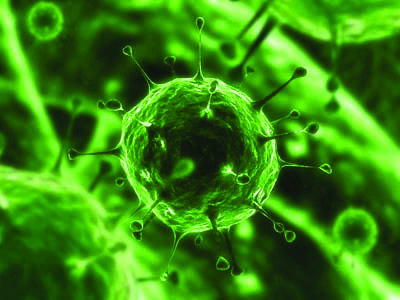Researchers have hotly debated the topic of viral classification for the past several decades. While scientists are still undecided as to whether or not viruses should be considered “living,” it is clear that these organisms do not meet the classical definition of life—maintenance of homeostasis, cellular organization, metabolism, growth, adaptation, response to stimuli, and reproduction. Viruses are complicated assemblies of molecules, including proteins, nucleic acids, and lipids; however, they lack some of the defining characteristics of life, such as the ability to replicate without the assistance of a host cell.
Recently, researchers have encountered convincing evidence that demonstrates that viruses may possess more complex immune systems than previously explored. This discovery adds to the ambiguity surrounding the nature of viruses, and presents the possibility that viruses may be gradually evolving into living organisms.
In an interview with Discovery News, Andrew Camilli, a molecular biology and microbiology professor at the Tufts University School of Medicine, noted that his recent research with cholera bacteria might possibly add to the argument that viruses exist as living entities. Camilli’s research focused on the feasibility of this bacteria’s role as a viral predator. However, while analyzing DNA sequences of phages taken from stool samples of Bangladeshi cholera patients in the lab, postdoctoral fellow Kimberley Seed was presented with persuasive evidence that could potentially accelerate the virus’s classification as a living species.
Seed discovered genes in these phages, usually present only in a fully operative immune system of different types of bacteria. In search for further evidence, Seed and her fellow team conducted experiments with viruses that did and did not contain immune related genes to infect another new strain of cholera bacteria. The results demonstrated that only the phages with a fully functional immune system were able to successfully kill the cholera bacteria.
The team also conducted research demonstrating that viruses have the capacity to acquire the immune systems of bacteria during their primary stage of infection. Essentially, the virus acts like a thief that invades the home of another living organism, stealing its efficient immune system, and transforming it, so that it is capable of providing an immunologic function for the virus itself.
In NBC’s interview with Gustavo Caetano-Anollés, a researcher at the University of Illinois, further evidence was presented in favour of the virus as a life form. In Caetano-Anollés’ lab, researchers conducted a census of protein folds, present in over 1,000 organisms. They sampled from the three conventional branches of life: bacteria, eukaryotes, and microbes. Different types of large viruses were also present in the study, in order to compare their genomes with genomes of the different life forms sampled.
The proteins and enzymes found in the viruses rivaled some of those of bacteria. For example, a virus called Crov, which originates in the ocean contains genes that repair themselves. Moreover, the virus may produce sugars that aid in the repair of its genome, and this allows it to gain more control over the equipment in host cells that allow the virus to replicate itself.
The research team also looked at the different characteristic features of life forms, and compared them to the structure of a virus. They found several ancient protein folds—present in different living organisms, also in the viruses examined—which exhibited more proof that a virus contains the origins of life.
While the ongoing debate has caused many scientists to ponder over whether viruses are more than simple genetic material, recent advancements are proof enough that viruses may be gradually, but efficiently moving towards being classified as a form of life. On one hand, they are considered parasites because they require the bodies of host cells to survive. However, viruses meet all of the requirements of life when living within the host cells, so some researchers have gone as far to classify them as the simplest living organisms. As for now, in the midst of controversy, viruses seem to exist in a purgatory between living and non-living, containing characteristics from both classifications.







